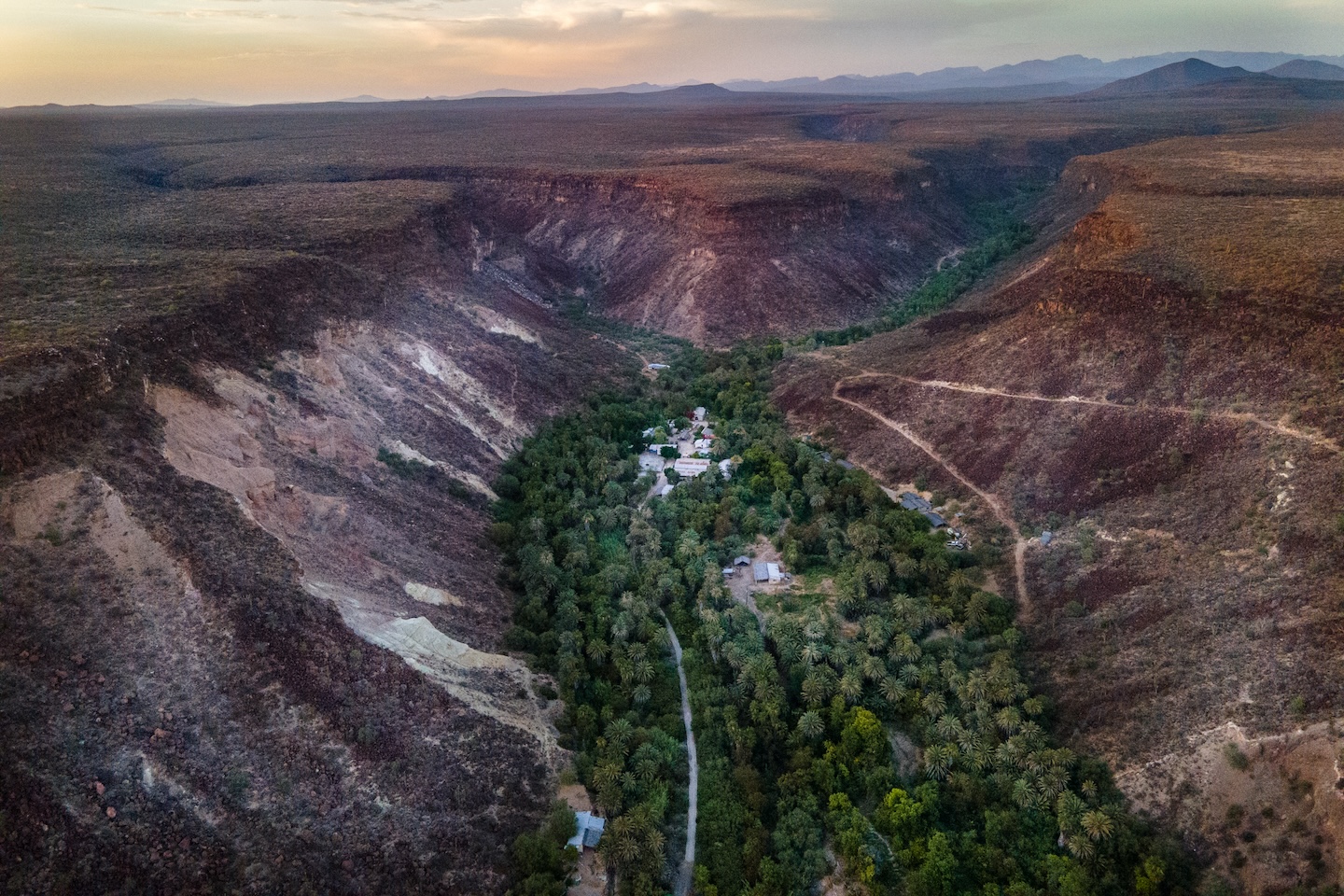
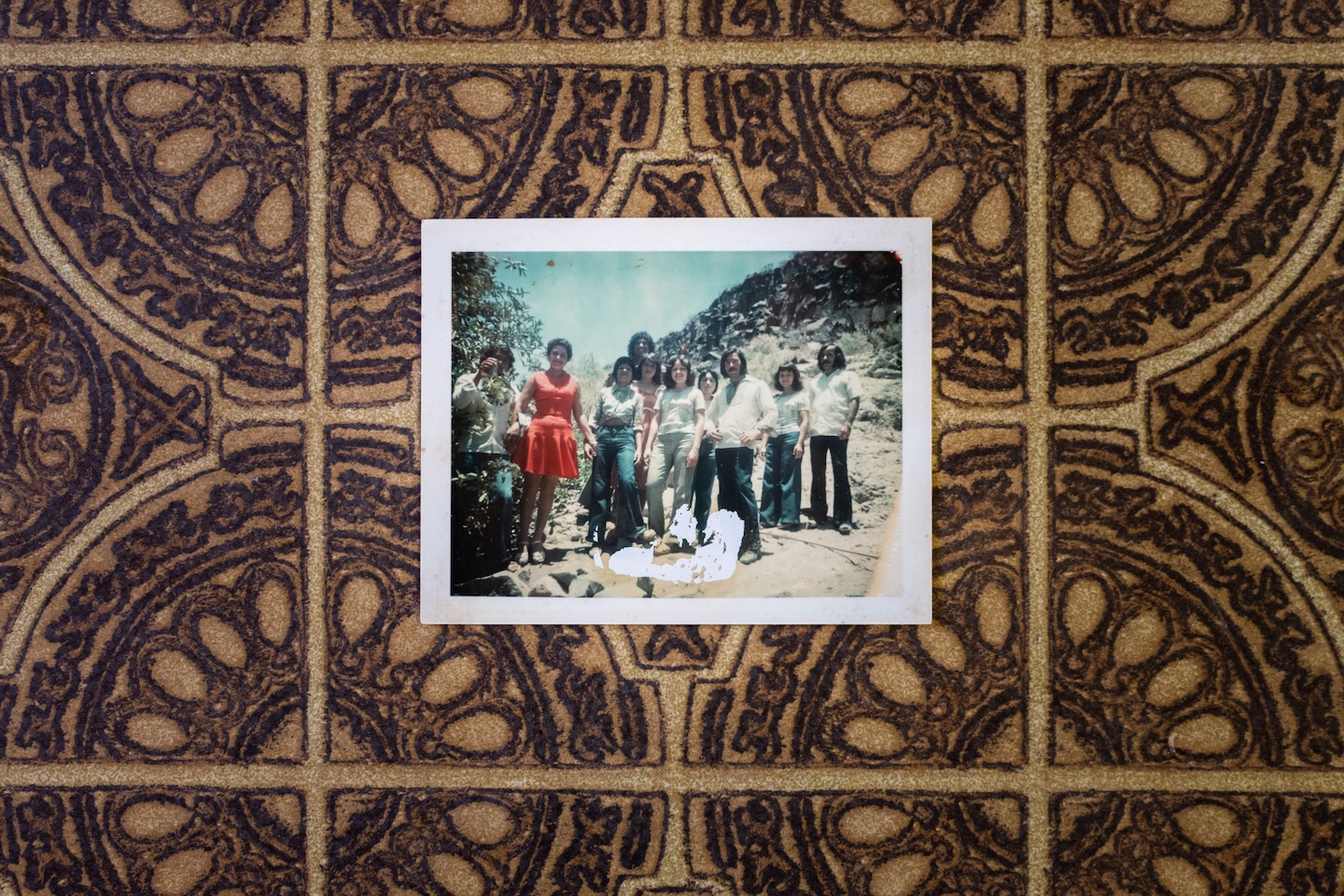


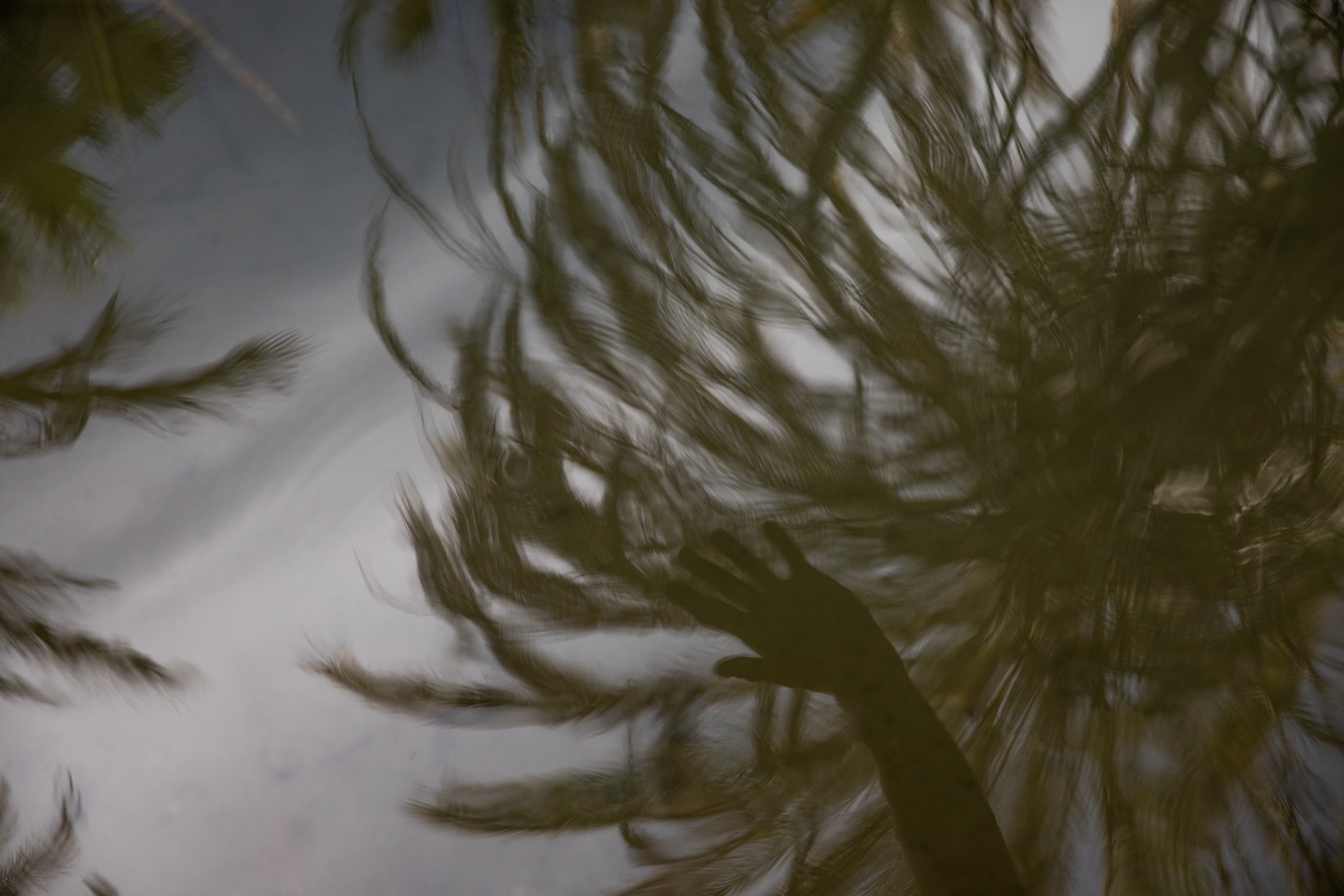
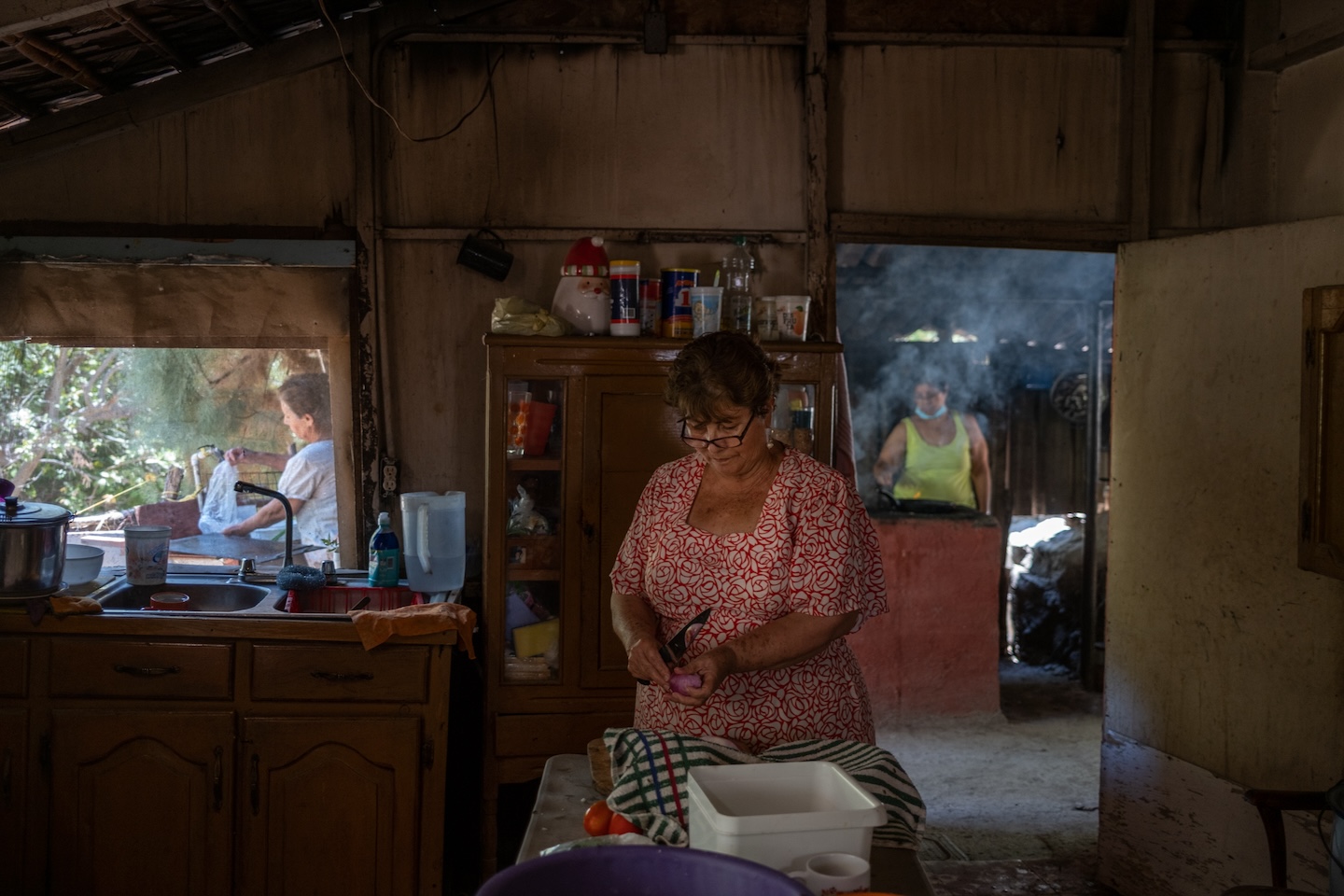


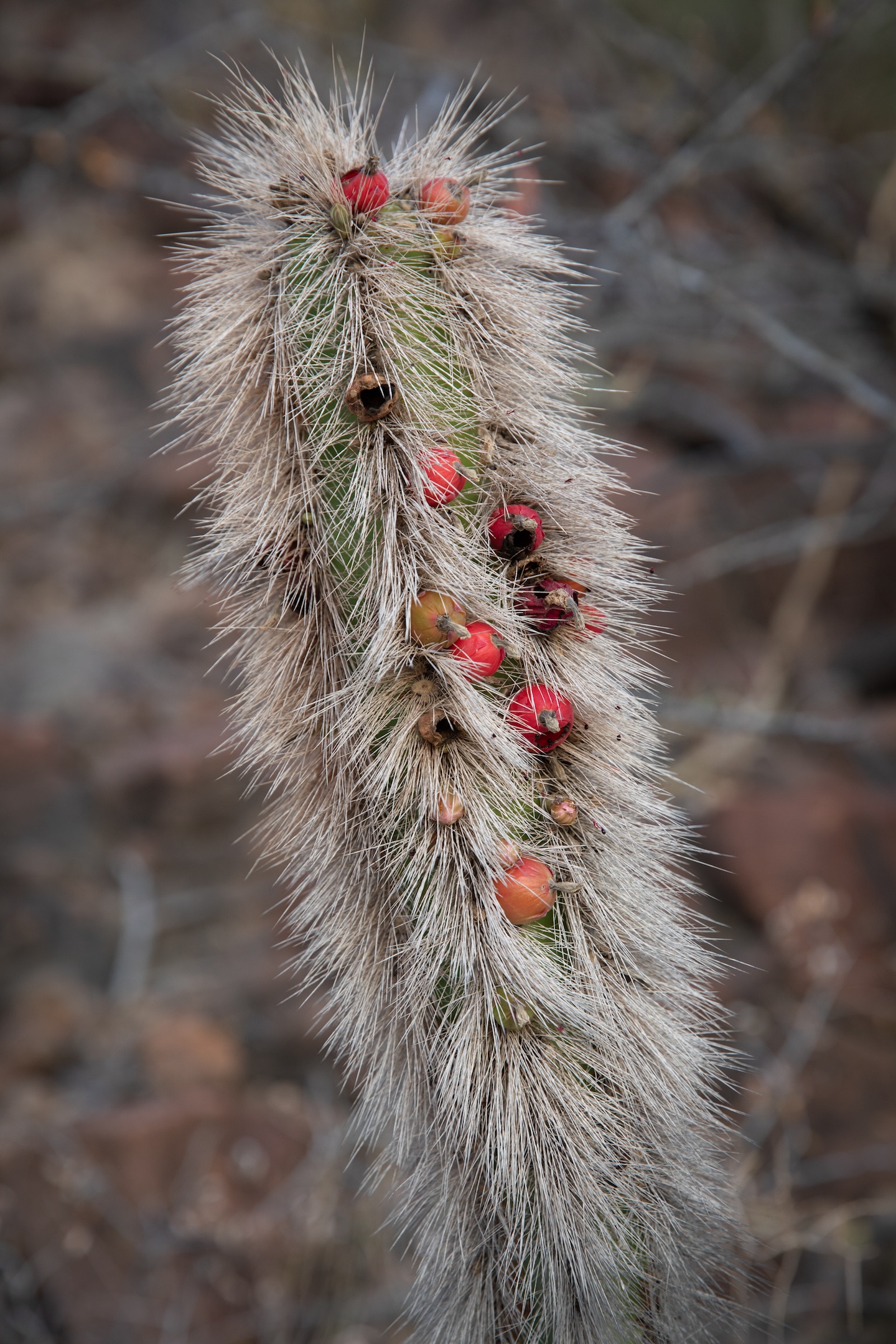
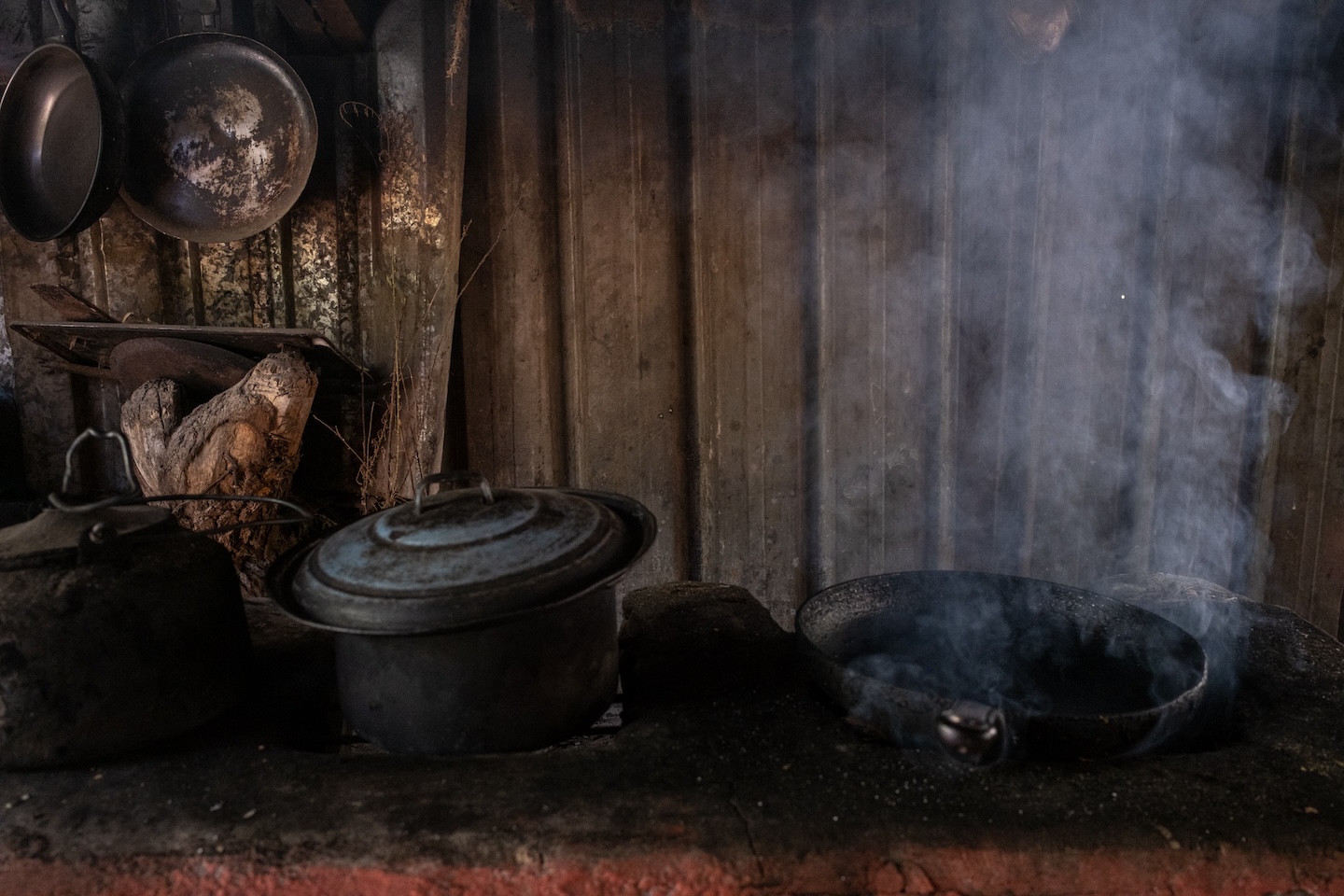
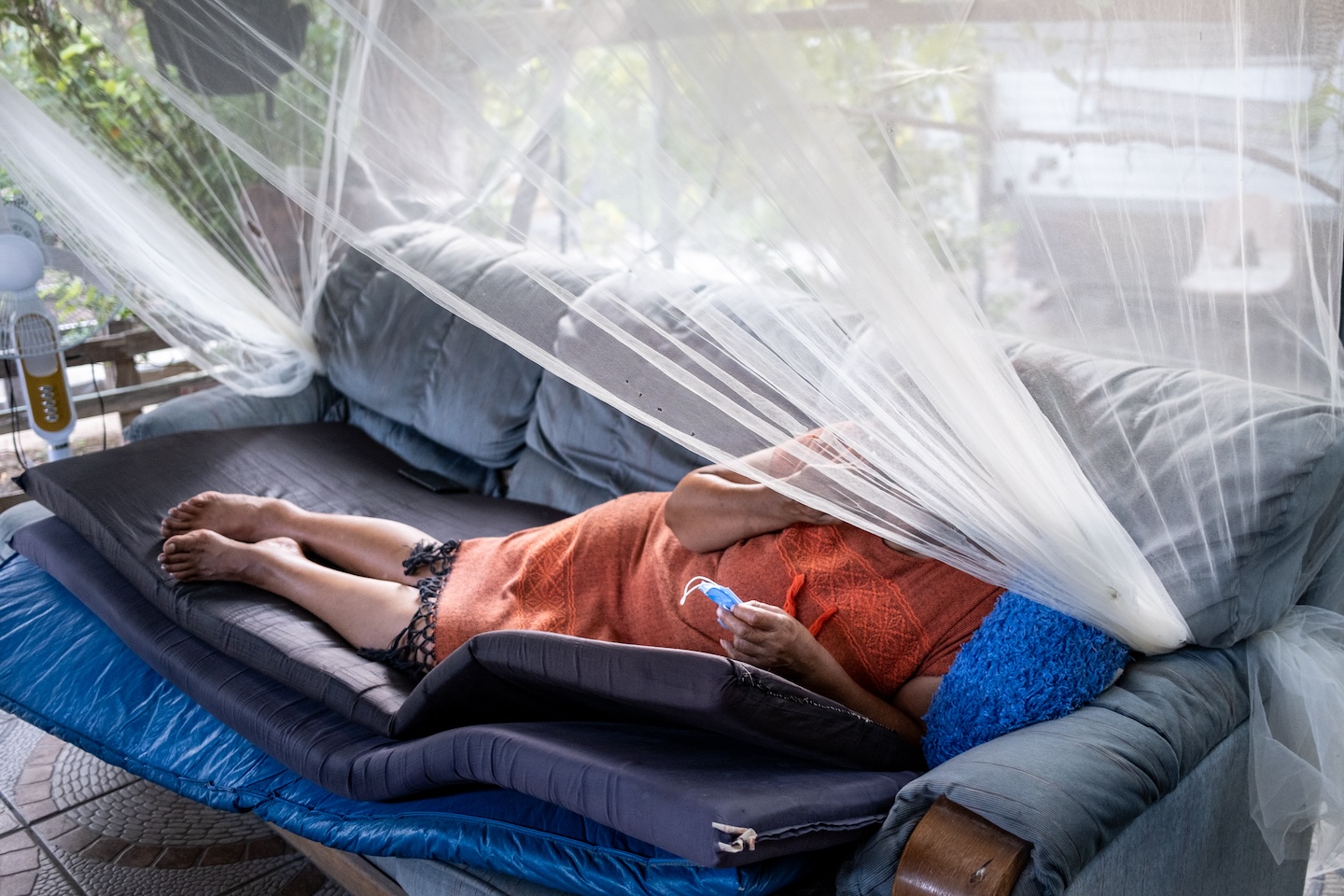
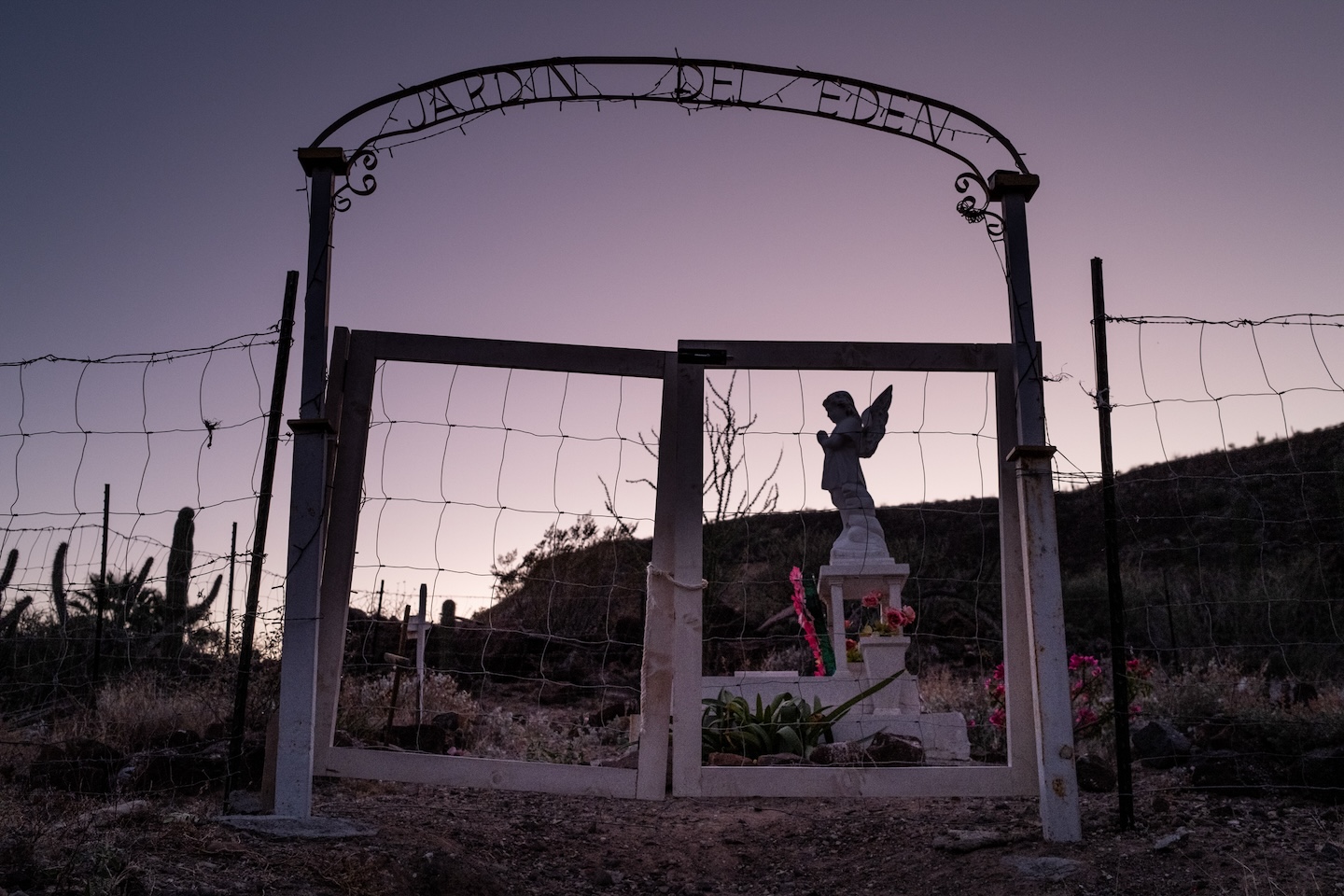


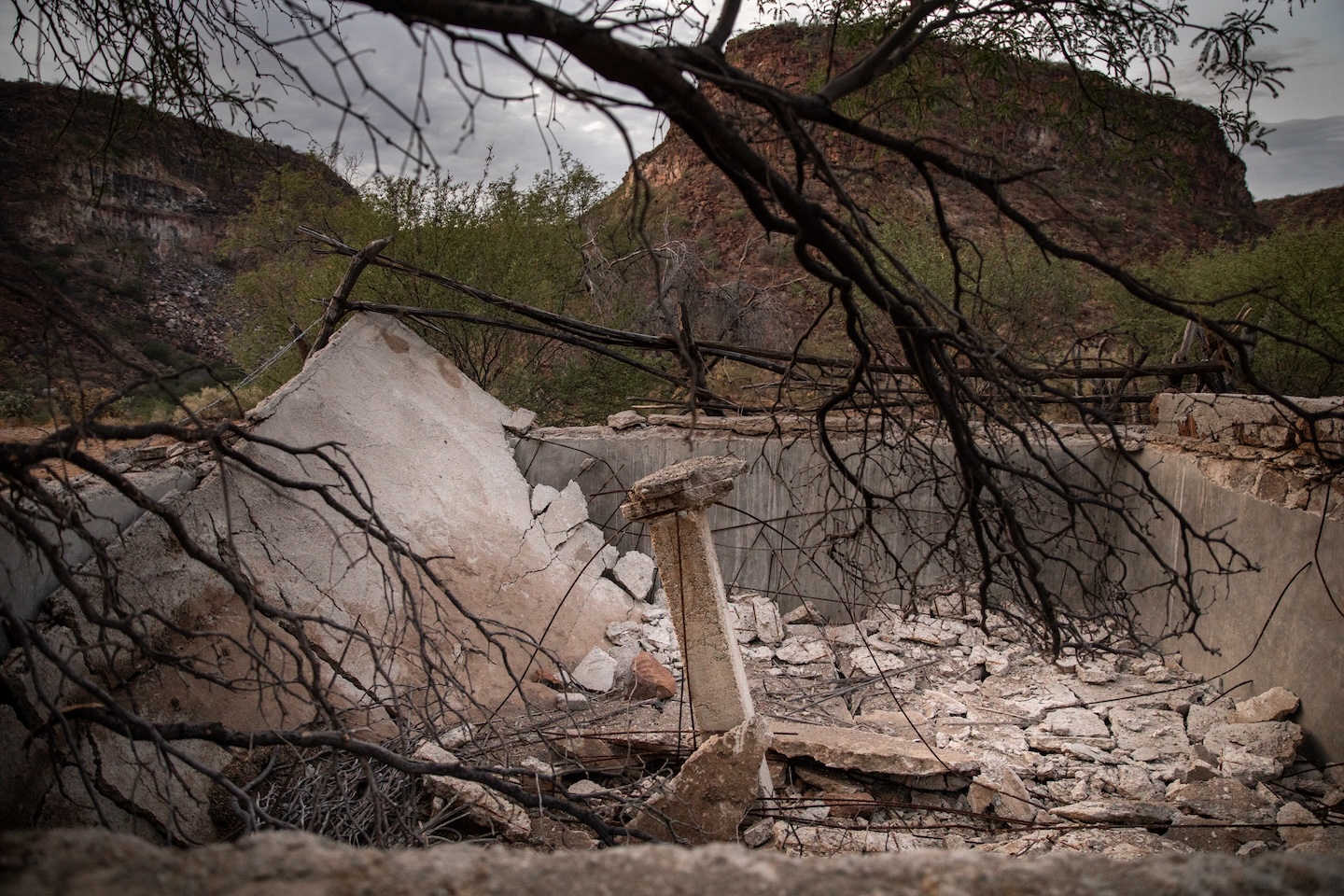

Photographer: Sofia Aldinio
Heidi: How did you learn about this community and the impacts of climate change on this once-thriving area?
Sofia: In 2020 while traveling through Baja California, Mexico with my family in our 1978 Mercedes Fire Truck. On New Year’s Day, we decided to commit to a 6+ hour dirt road to chase some waves. It was out there. We had never been so remote with the van. We were only 7 km away from the town, right at sunset, we were stoked and relieved that we were almost there, when we felt a huge pull in the van and we saw our back wheel driver side wheels sliding off the axle. We were then stuck for 3 days, on the side of the dirt road.
The local mechanics tried everything to avoid a four-hour drive by truck to the closest town to help us move the van. They finally worked their magic and we moved the van into town. We were stranded on the oceanfront and surf paradise for over six weeks.
In my time there, I was so curious about the area. In just a few days we met so many locals. At this time, I was already developing a story about the small fisherman communities and their struggles to sustain a living. On one of my daily trips to the beach, I met this one American woman who shared with me that I had to visit a community located 2 hours away. She then described it as something you will never find in Baja. I was immediately so curious and before you knew it I was driving with her to the community to spend an entire day out there. I was hooked. As soon as I got there it felt to me that I was witnessing the past in the present moment. I fell in love with the slow pace and the old tales you could feel hanging in the air. It was a sense that these are the last keepers of this community.
Most of my work focuses on climate impacts and I was already reporting on the fishing community and how they were being impacted by the changes in the weather patterns and climate change, I immediately started questioning how the canyon community was affected. I then learned about the lack of rain, the unpredictable weather changes, how this is affecting the existing crops, and how the one and most important life source, water, has been significantly decreasing over the years.
Despite the unforgiving landscape and harsh living conditions – you found pockets of hope and resilience – when did that begin to unfold?
Since my early 20’s I have been always roaming around in and out of small villages in Latin America. It really didn’t take long for me to discover the joy that there is in simply living in a community surrounded by nature. The joy comes from just feeling that nature provides everything you need. Many times I have encountered travelers or outsiders thinking that these communities are poor, the truth is that they don’t have much, but also they are content as they are. I don’t want to sound naive, I am aware that there is a lot of poverty and in many cases, people there do desire more and they end up choosing another way of life. It’s complicated. Today fewer people choose to live in this way, and most refuse it. But there is still a small portion of close communities that do enjoy it, and they do want to preserve their heritage. That’s what I found in San Jose de Gracia.
In the San Jose de Gracia community, the land has provided for them, daily. They also have a long relationship with it. They are part of it. Most of the people were born there and still live there to this day. The memories are everywhere, and I found this created so much joy in them. It goes full circle. The land provides and they will become a part of it, no matter what, and I call this resilience.
When did the photo project begin?
I have always been intrigued by slow-paced stories. The stories that are not often “dramatic”. Stories that can speak of daily life with ordinary people. I think there is so much to learn from them. The idea of photographing someone in a remote location who is simply living sounds extraordinary to me. Eugene Richards once said “People’s lives are revolutionary in little ways.” I love this. I love ordinary moments, just a detail that we can all relate to.
So, going back to the question, I think this photo project began even before I went to the community. When we lost our van wheels and were stranded, I just knew everything was happening for a reason. And then I heard about San Jose de Gracia and I just knew that was why I was there.
How did you approach storytelling within a community of just 21 people?
I often approach any story, assignment, or project the same way. I never make a plan. I like the feeling of seeing where the story and the photographs take me. I might walk into the story with an idea of how I wanted to approach this kind of work, but then the work starts showing me it’s way, and dictating how it should be displayed and photographed. There was one thing I knew, that I wanted to be collaborative. I wanted to provide the community a space to tell their story.
When I decided to focus on the intersection between climate and cultural heritage I immediately knew it would be beautiful to ask community members if they wanted to draw places in the community that have changed over time. On one of my trips I brought with me paper and a lot of pencils and what they drew was so beautiful. I was able to see into their past. They started drawing their memories. So what started with just photographs, ended up with archival materials, drawings, and photographs. Patience and time are key in projects like this. I think it is important to challenge the conventional way. When we let the people that we are photographing take part in it, something magical happens, a new depth is created.
Congratulations on your Pulitzer Center’s Eyewitness Photojournalism Grant – was that always a goal for this work?
When you spend several years working on a project, you need financial and community support. What I liked the most about the Pulitzer Center was the opportunity to be part of a community of storytellers and reporters. I was excited about the opportunity to share my work through their teaching programs. Over the past years, I have had some opportunities to share my work with students learning about climate change and Mexico here in the USA, which was so rewarding. It also gave me the chance to connect with other storytellers working on climate change stories.
How will this work evolve?
It is constantly evolving. It’s like every relationship.
Sometimes my mind works like a filmmaker. I am not your classic photographer who will come back with this one frame that encapsulates everything in one photograph. I do very much love this idea of a photo story. This series of photographs can compose a story. It is my favorite thing. I am obsessed with it. One image will reveal the next and so on. I also love audio. Today I am working on putting together a multimedia piece to combine the illustrations, photographs, audio, and a little bit of video. I like to experiment in my work. And I think in some cases photos are just not enough. I also like the idea of reaching a different audience by creating multimedia pieces.
How does memory and cultural preservation vs erasure come to life in this work for you?
To me, it comes to life when people experience the work and can walk away asking themselves what would it mean to keep losing places and communities like San Jose de Gracia. The purpose of the work is not trying to answer any questions, it is trying to ask them. Behind the purpose of this work is the question that has driven me forward.
Creating a multimedia exhibit where people can experience the tension of preservation and erasure through the real-time experience of San Jose de Gracia has always been my goal. A place where you can feel in real time – these memories fading, traditions being washed away, and all that is left is their land while at the same time witnessing the few struggling to keep living in their way.
I hope it inspires US audiences to view migration as a shared challenge and instills a desire to live more sustainable lifestyles and preserve wild lands, sacred traditions, and cultural heritage.
How has being a mother, a wife, and living a determined and considered life impacted your work?
Being a mother has been an extremely beautiful, and challenging journey. Especially because I decided to be a full-time freelance visual journalist at the same time, I became a mother. This was extremely painful because I wanted to be in the field for infinite hours. I have such a big pull for this work, but I couldn’t leave my kids behind. Sometimes I brought them with me. I did anything I could to keep working and being a present mother. It took everything out of me. I got burned out. I was up working most of the night and then up with the kids. It took a big hit in my relationship. I knew I didn’t have the luxury of time. So I told myself I needed to become good, really fast. I needed to be able to get the shot super fast. I trained myself to be very efficient in the field. I am not sure if I was always successful, but I know that when I’m shooting I’m working super hard to capture the right shots, not just a lot of shots.
The biggest way motherhood has impacted my work is that when I’m photographing someone, I am always aware that this person has a mother or children. Before photographing a person in a harsh situation, I always ask if it is worth it and how this photograph is going to benefit them. The way I feel and see photography today is not the same as it used to be before having kids. I think it is ok to challenge photography in this way. I love seeing all the new approaches by photographers to talk about migration, racism, climate change, and other topics.
During covid you took your kids traveling – nature was the classroom – tell us more about that.
My favorite memory was a trip we did in the Green River where we decided to follow the John Wesley Powell journey and the pioneers. It was so much fun. We bought a book and learned about their journey, went to the museum, and took the kids on some multi-day kayak trips in the Green River learning about their journey and what it looked like to that trip back to them. It’s my favorite memory from that time. I still dream about paddling more sections of the Green River with them!